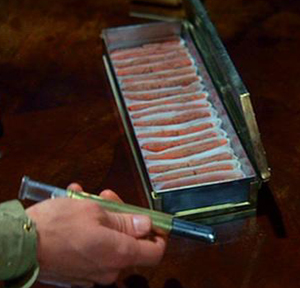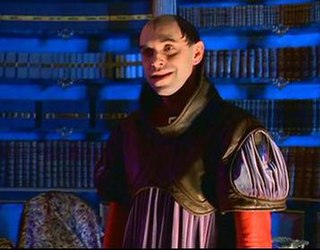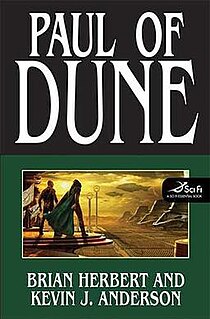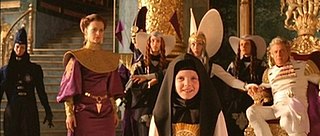House Vernius is a fictional noble family from the Dune universe, though the family does not actually appear in Frank Herbert's work. Rather, they are featured in the prequel series Prelude to Dune (1999–2001) and Heroes of Dune (2008–present) by Brian Herbert and Kevin J. Anderson.

Dune is a science fiction media franchise that originated with the 1965 novel Dune by Frank Herbert. Dune is frequently cited as the best-selling science fiction novel in history. It won the 1966 Hugo Award and the inaugural Nebula Award for Best Novel, and was later adapted into a 1984 film and a 2000 television miniseries. Herbert wrote five sequels, and the first two were presented as a miniseries in 2003. The Dune universe has also inspired some traditional games and a series of video games. Since 2009, the names of planets from the Dune novels have been adopted for the real-world nomenclature of plains and other features on Saturn's moon Titan.

Franklin Patrick Herbert Jr. was an American science fiction writer best known for the novel Dune and its five sequels. Though he became famous for his long novels, he was also a newspaper journalist, photographer, short story writer, book reviewer, ecological consultant and lecturer.
A prequel is a literary, dramatic, or cinematic work whose story precedes that of a previous work, by focusing on events that occur before the original narrative. A prequel is a work that forms part of a backstory to the preceding work.
Contents
According to Dune: House Atreides , the family crest of House Vernius is a purple-and-copper helix. [1]

Dune: House Atreides is a 1999 science fiction novel by Brian Herbert and Kevin J. Anderson, set in the fictional Dune universe created by Frank Herbert. It is the first book in the Prelude to Dune prequel trilogy, which takes place before the events of Frank Herbert's celebrated 1965 novel Dune. Bantam Books made a $3 million deal for the novels in 1997. The Prelude to Dune novels draw from notes left behind by Frank Herbert after his death.
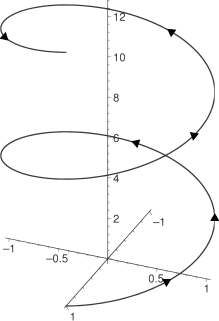
A helix, plural helixes or helices, is a type of smooth space curve, i.e. a curve in three-dimensional space. It has the property that the tangent line at any point makes a constant angle with a fixed line called the axis. Examples of helices are coil springs and the handrails of spiral staircases. A "filled-in" helix – for example, a "spiral" (helical) ramp – is called a helicoid. Helices are important in biology, as the DNA molecule is formed as two intertwined helices, and many proteins have helical substructures, known as alpha helices. The word helix comes from the Greek word ἕλιξ, "twisted, curved".



